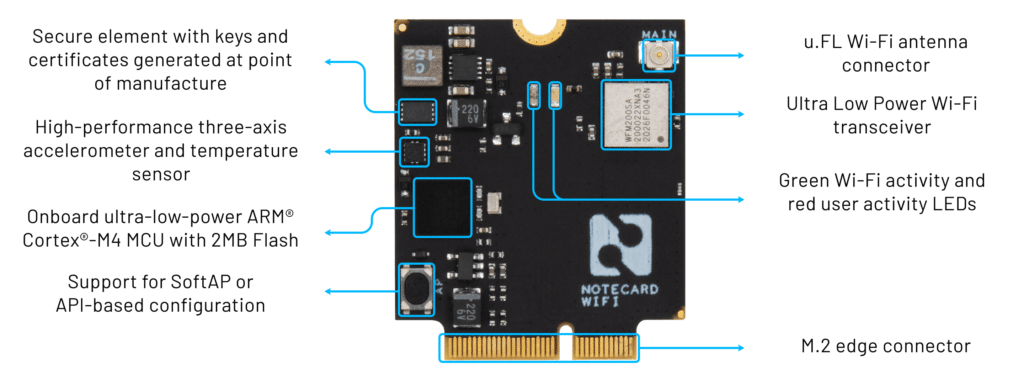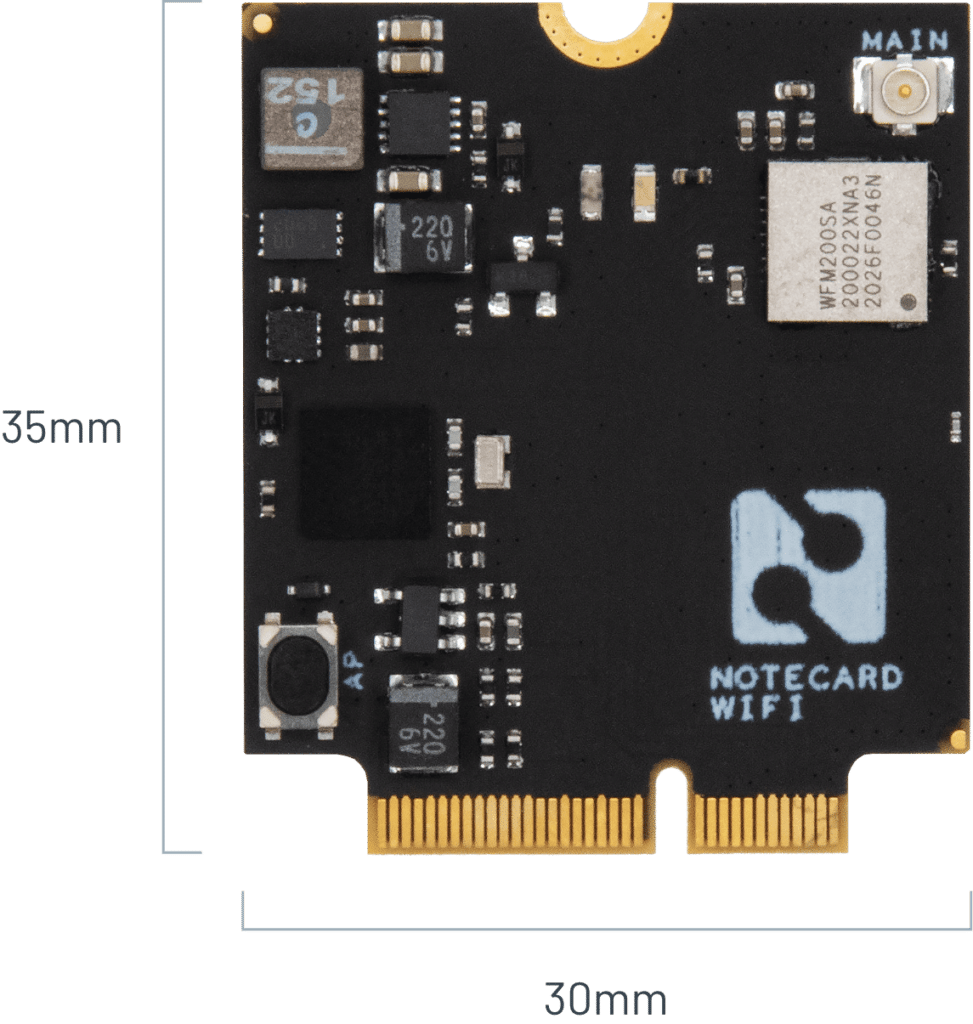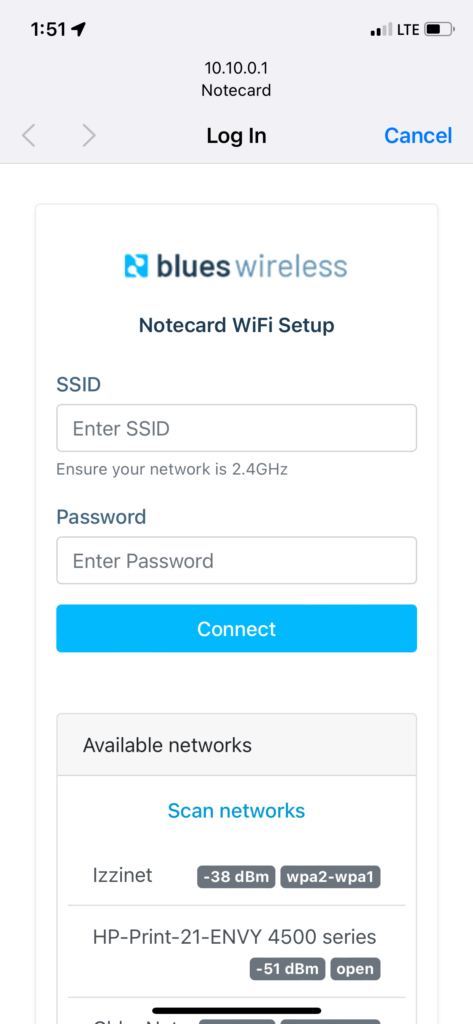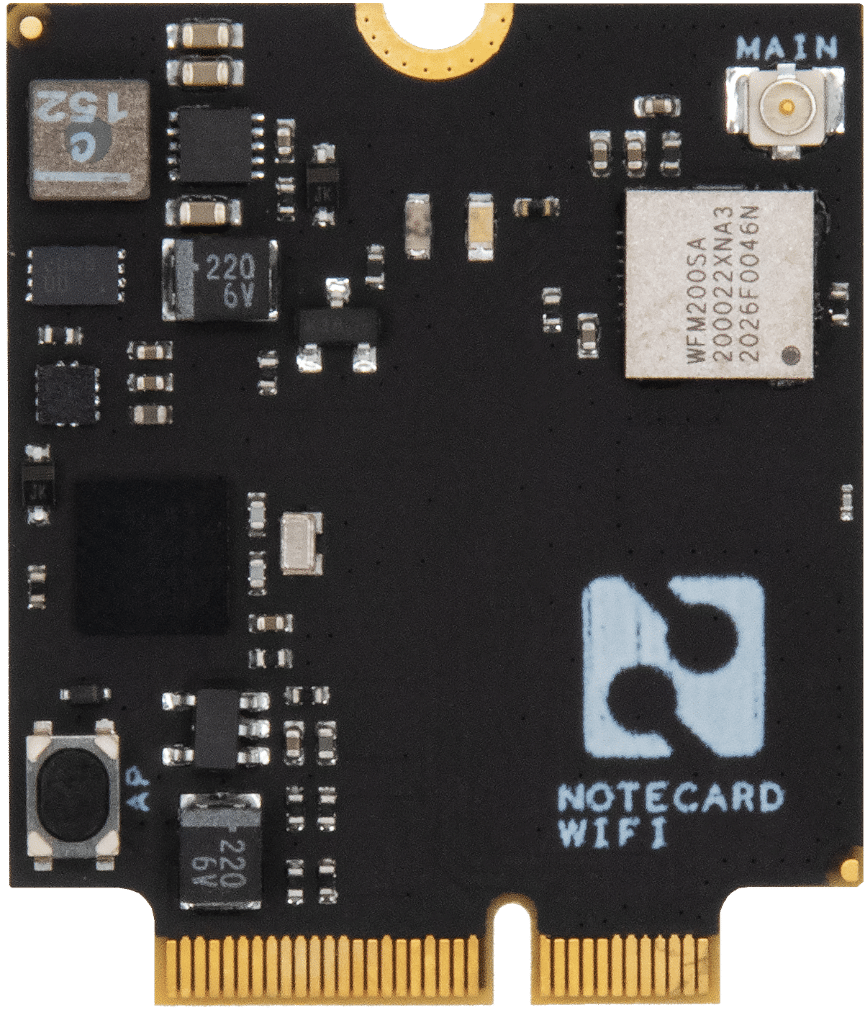The Blues Wireless story began with prepaid low-power cellular, all wrapped up in a developer-friendly package. Today we mark a new chapter as we bring another connectivity option online: the Wi-Fi Notecard.

Why Wi-Fi?
Cellular is the most ubiquitous (and secure) network connectivity option available. However, we’ve heard from many customers who also wanted a Wi-Fi option. Why? Well, you provided us with two key use cases:
- You have mixed deployments where cellular makes sense at Location A, and Wi-Fi at Location B.
- When prototyping, you’d rather use Wi-Fi instead of cellular to save on Notecard cellular data usage.
Let’s see how the Wi-Fi Notecard can help.
Be sure to consult the Wi-Fi Notecard datasheet for additional technical details.
What the Wi-Fi Notecard Provides
While there is no shortage of Wi-Fi modules available for IoT developers, the Wi-Fi Notecard differentiates itself in five key ways:
It’s swappable with the Cellular Notecard
If you’re working on an IoT deployment that has mixed access to Wi-Fi and cellular, the Wi-Fi Notecard is fully hardware-interchangeable with the Cellular Notecard on any Notecarrier. This allows you to use different connectivity methods on the same PCB design with the same antennas.

It maintains Notecard API compatibility
Building off of the “swappable” nature of the Wi-Fi Notecard, you can continue to use the same Notecard APIs you’ve been using with the Cellular Notecard (the exception being any Wi-Fi or cellular/GPS-specific requests and responses!).
// Wi-Fi or Cellular:
{
"req": "note.add",
"file": "sensors.qo",
"body": {"temp": 72.22 },
"sync": true
}
It provides secure communications from device-to-cloud
The Wi-Fi Notecard and Notehub.io provide end-to-end data security: from your device, to Notehub.io, and to your cloud using TLS. You can also optionally encrypt your data.
It’s a low-power Wi-Fi module
Like the cellular Notecard, the Wi-Fi Notecard is low-power by default, to the tune of ~8uA when idle. Network connectivity over Wi-Fi is only used on a periodic basis by default, meaning your device doesn’t have to sustain a network connection, thus saving power.
Note that the Wi-Fi Notecard only connects to 2.4GHz access points (another power-saving feature).
It’s easy to set up
One of the advantages of the cellular Notecard is its zero-friction getting started experience, free from device provisioning and certificate management. We’ve also made the Wi-Fi Notecard setup experience as easy as possible by providing both an API to connect to a Wi-Fi access point (via card.wifi):
{
"req":"card.wifi",
"ssid":"<ssid name>",
"password":"<password>"
}
…or alternatively through a UI on your smartphone to select the Wi-Fi access point you need:

Get Your Wi-Fi Notecard
We welcome you to accelerate your IoT solution with the new Wi-Fi Notecard!
Buy a standalone Wi-Fi Notecard, or buy a Feather starter kit or Raspberry Pi starter kit that include Cellular AND Wi-Fi Notecards.
Regardless of the Notecards you buy (cellular or Wi-Fi), you can follow the same quickstart experience.
Happy Hacking…on Wi-Fi! 👩💻
